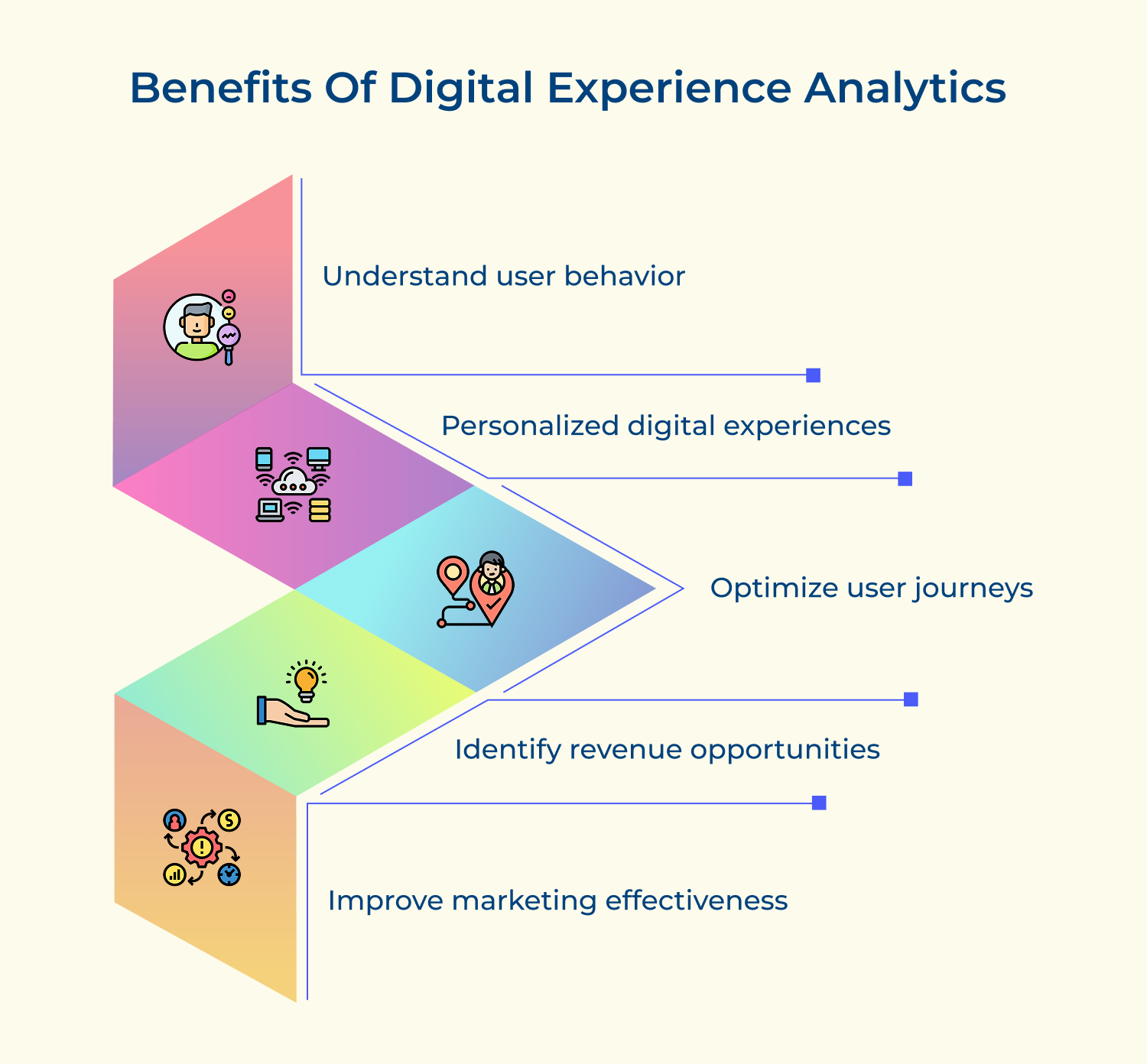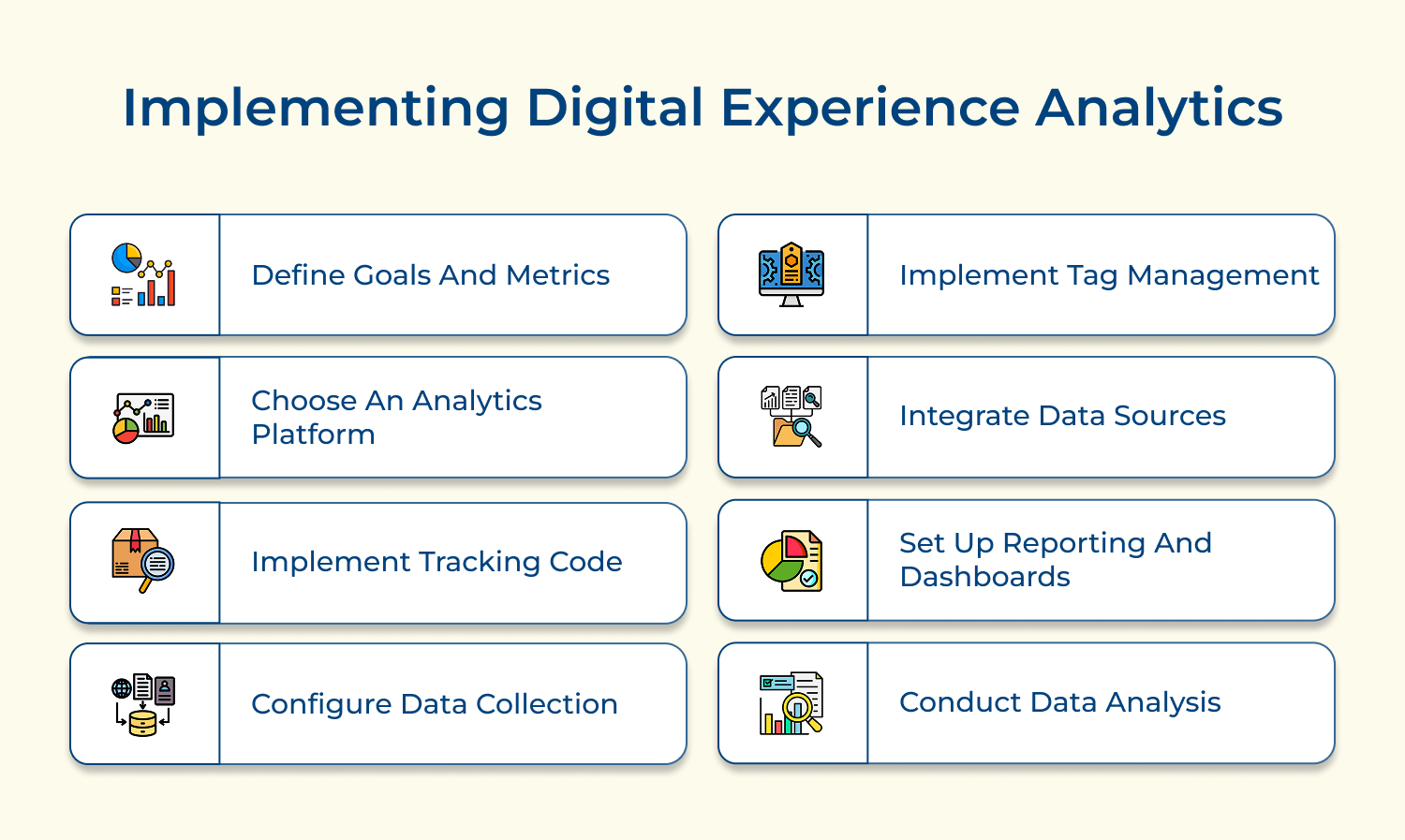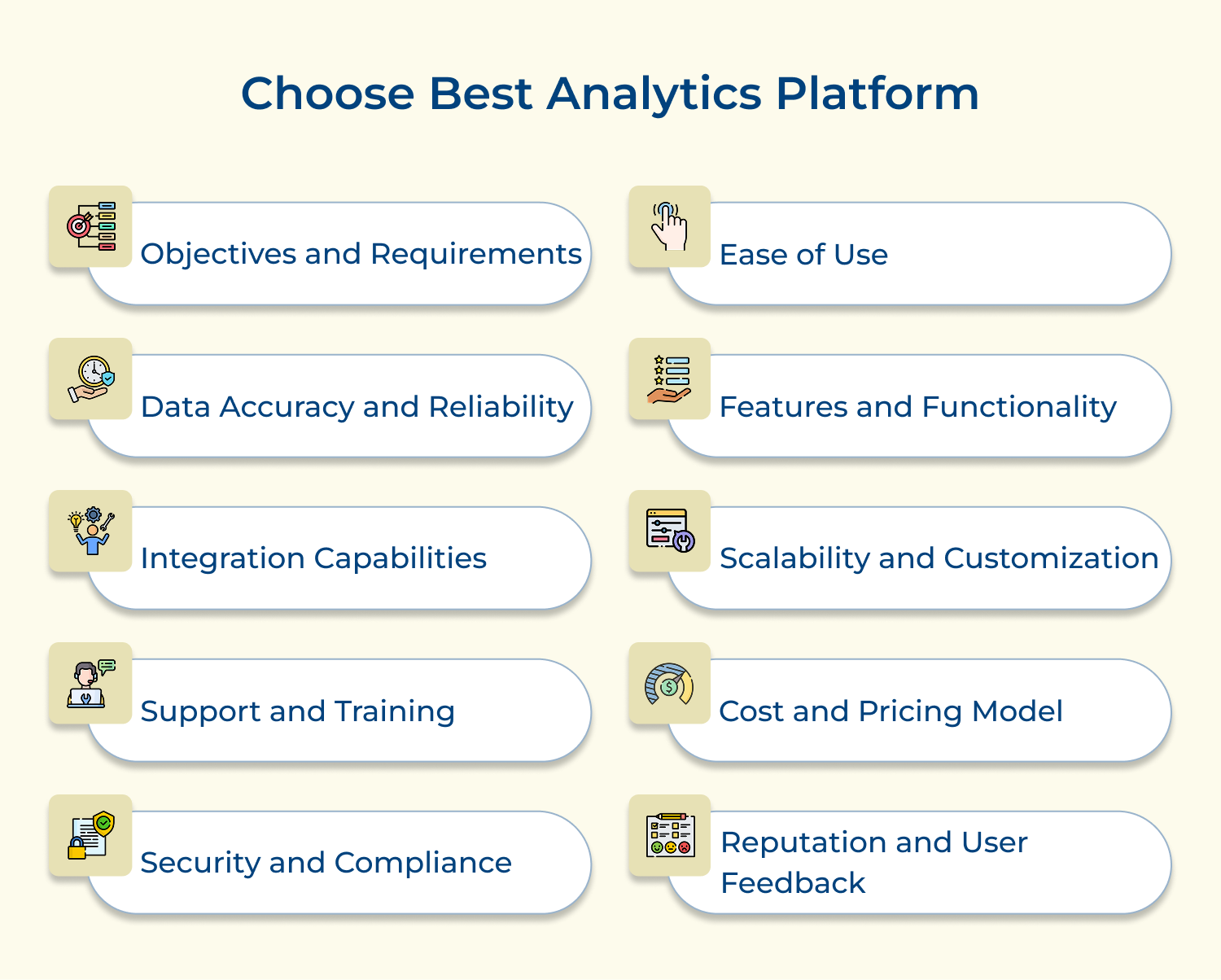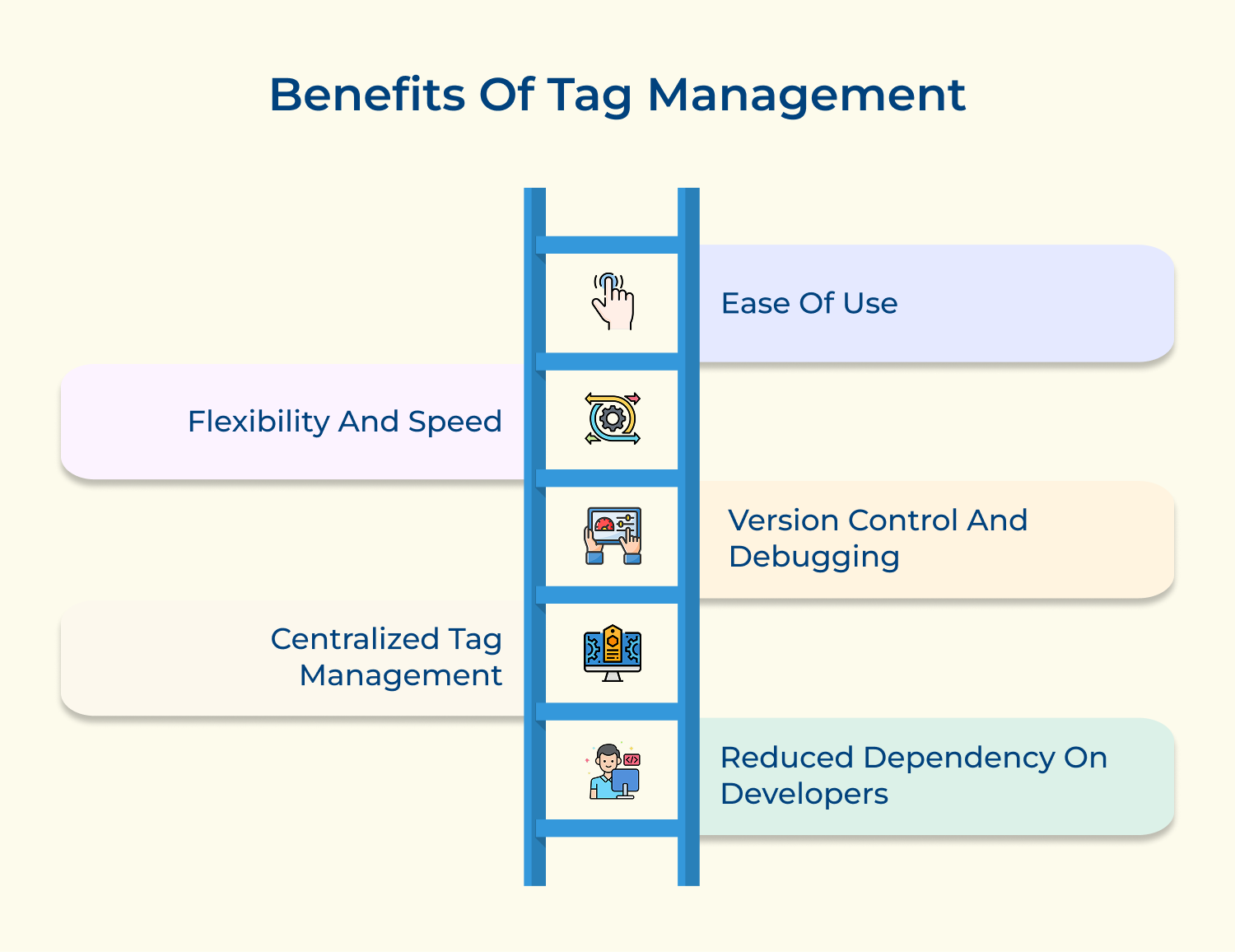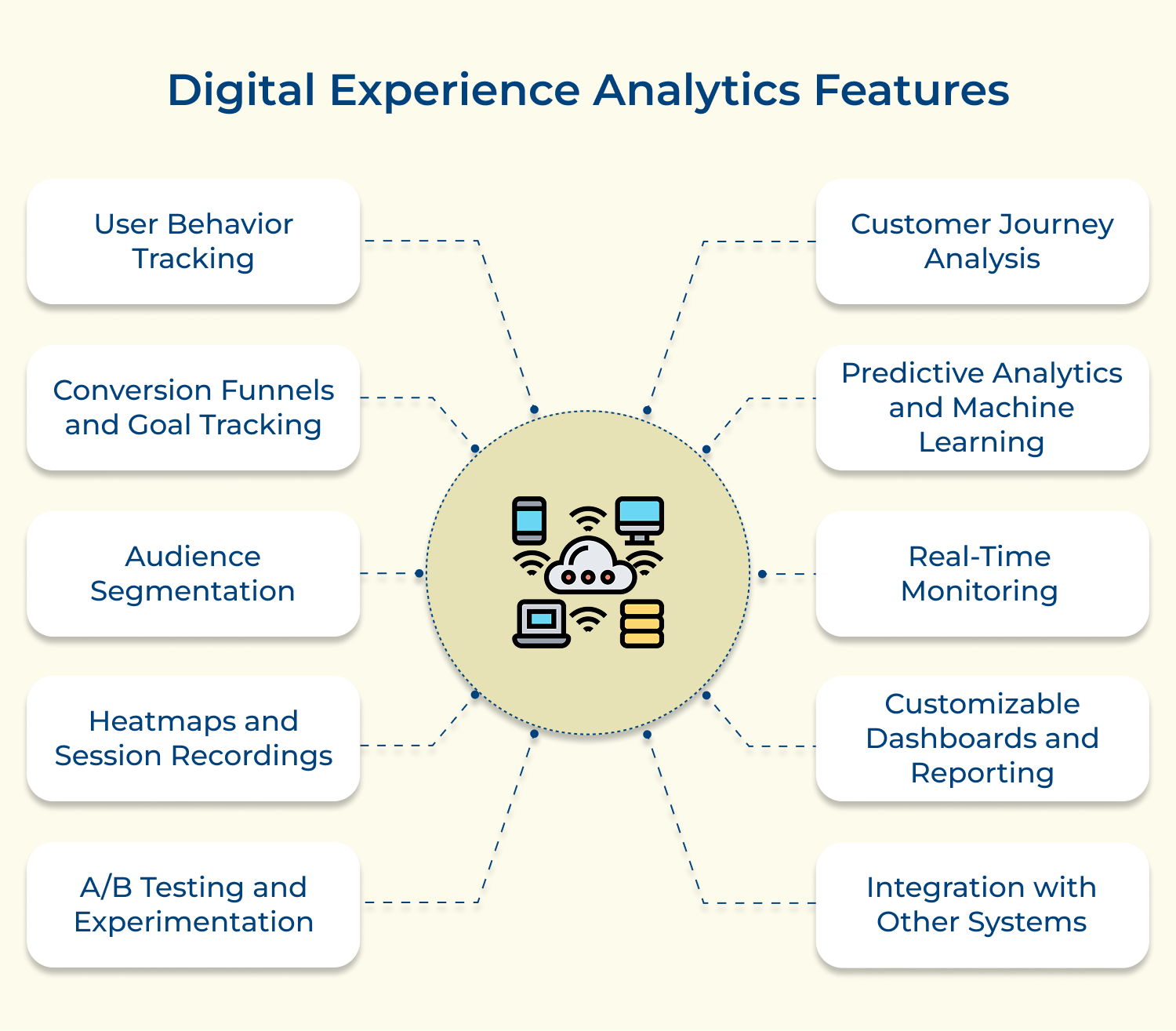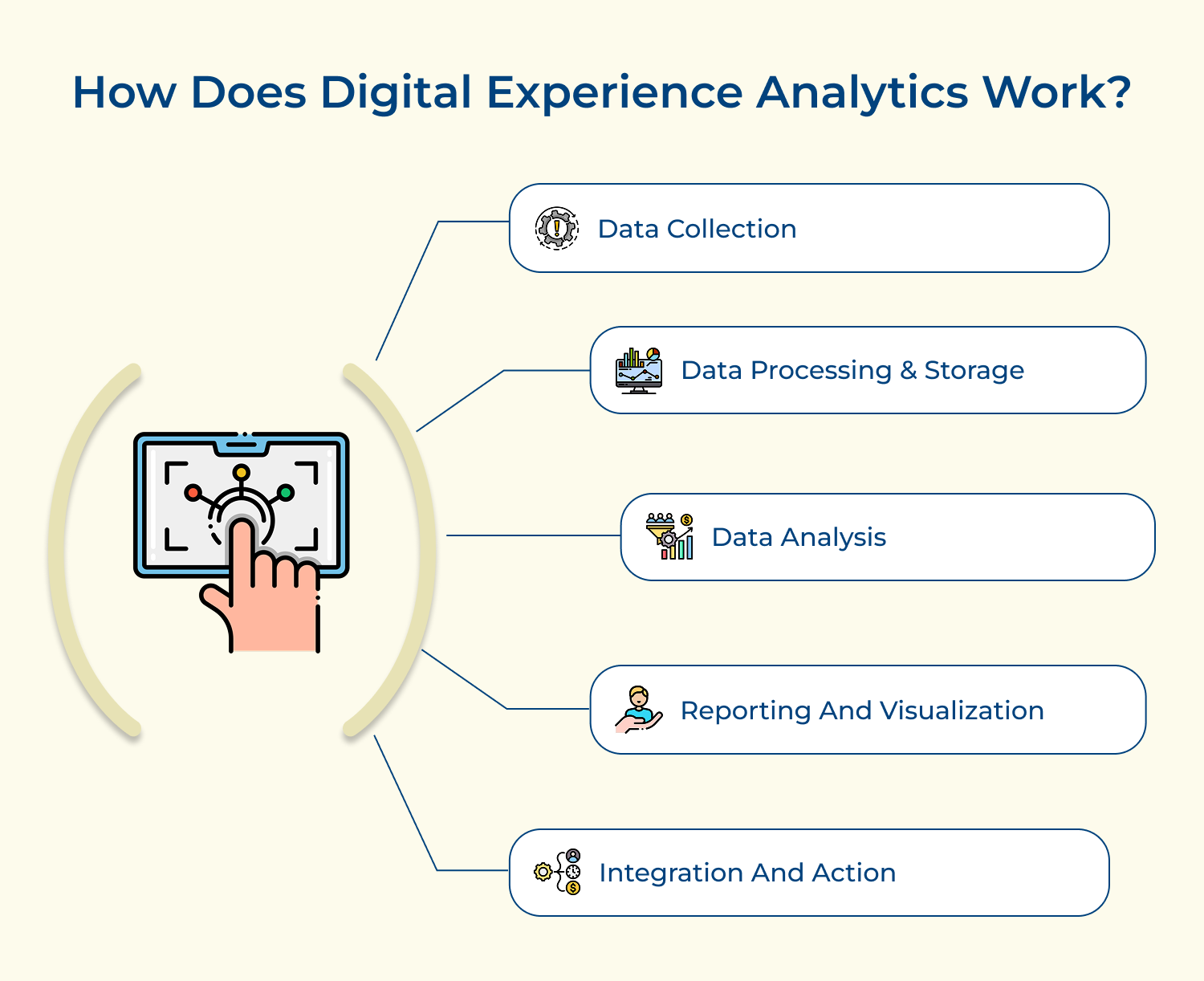1. Data Collection
JavaScript tags or server-side tracking codes are implemented on websites to capture user interactions, such as page views, clicks, scroll depth and form submissions. Software development kits (SDKs) are integrated into mobile apps to track user events, sessions, crashes, and in-app behavior.
Data can also be collected from sources like CRM systems, marketing automation platforms, social media and IoT devices, depending on the digital touchpoints involved.
2. Data Processing & Storage
The collected data is transmitted to the analytics platform’s servers for processing and storage. Data is cleaned, transformed and organized into a structured format for analysis. Data warehouses or big data platforms are often used to store and manage the large volumes of data generated.
3. Data Analysis
The analytics platform provides tools and algorithms to analyze the collected data. Techniques like data mining, statistical analysis & machine learning are employed to uncover patterns, trends, and insights. The key metrics and KPIs are calculated, such as conversions, bounce rates, session duration, and user flows.
4. Reporting and Visualization
The analytics platform typically offers customizable dashboards and reporting interfaces. Data is presented through visual elements like charts, graphs, heatmaps and funnels, making it easier to understand insights. Advanced platforms may also offer predictive analytics and recommendation engines based on the analysis.
5. Integration and Action
Digital experience analytics platforms often integrate with other systems like CRM, marketing automation and content management systems. Insights gained from the analysis can inform data-driven decisions and actions, such as optimizing user flows, personalizing experiences, or improving product features. Continuous testing and experimentation.

